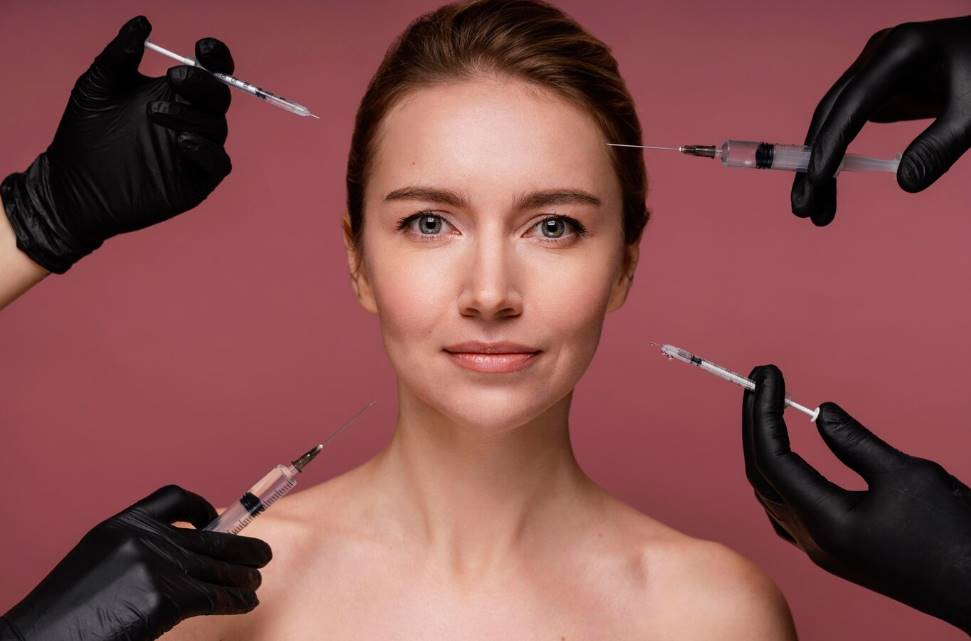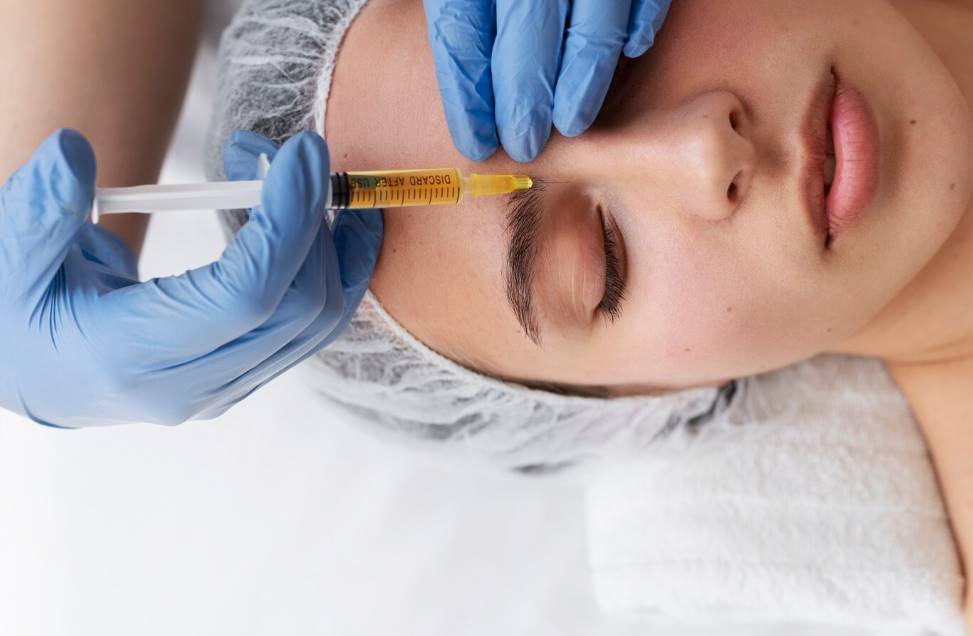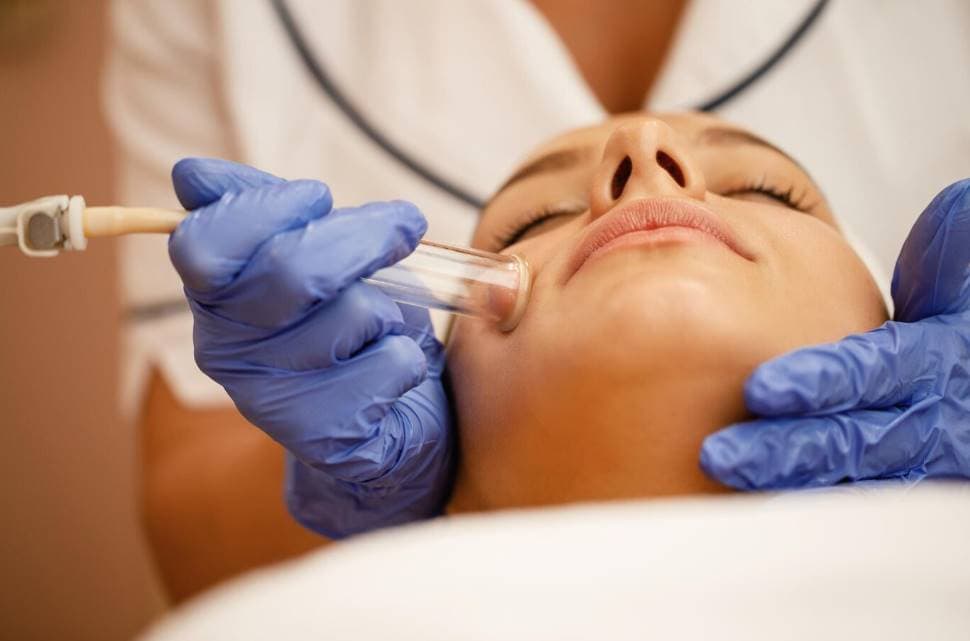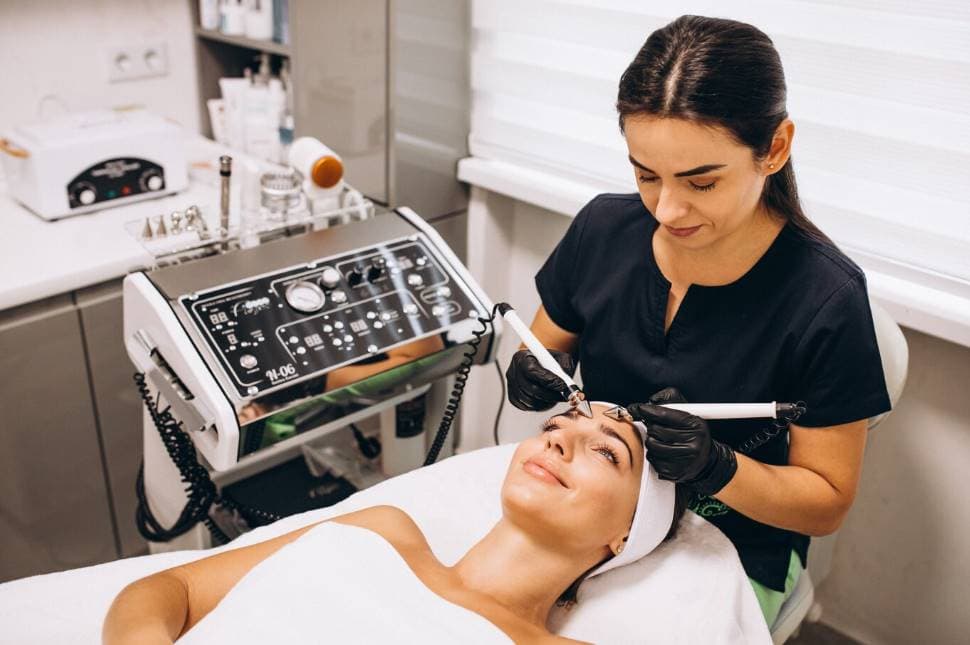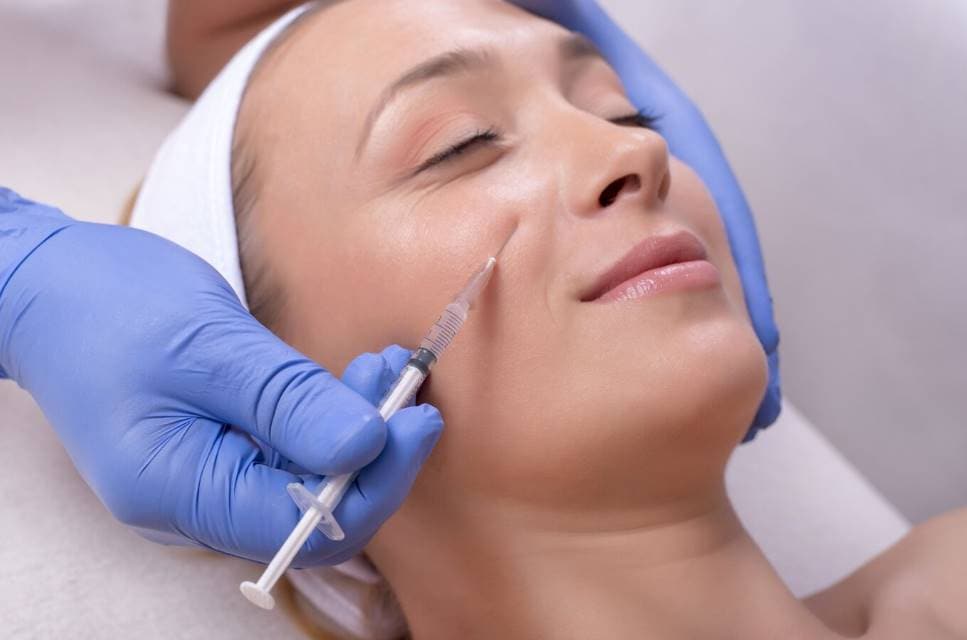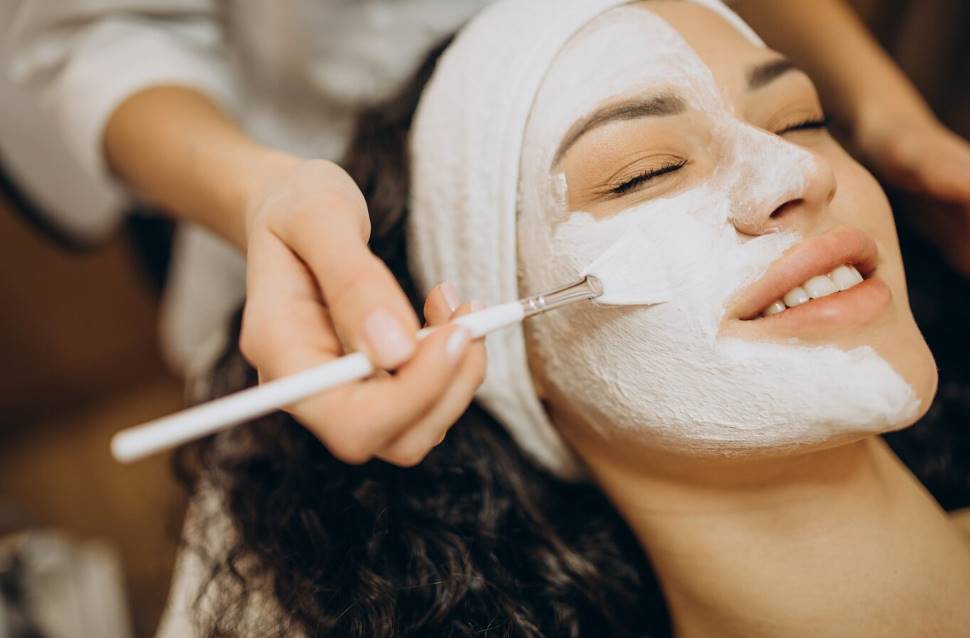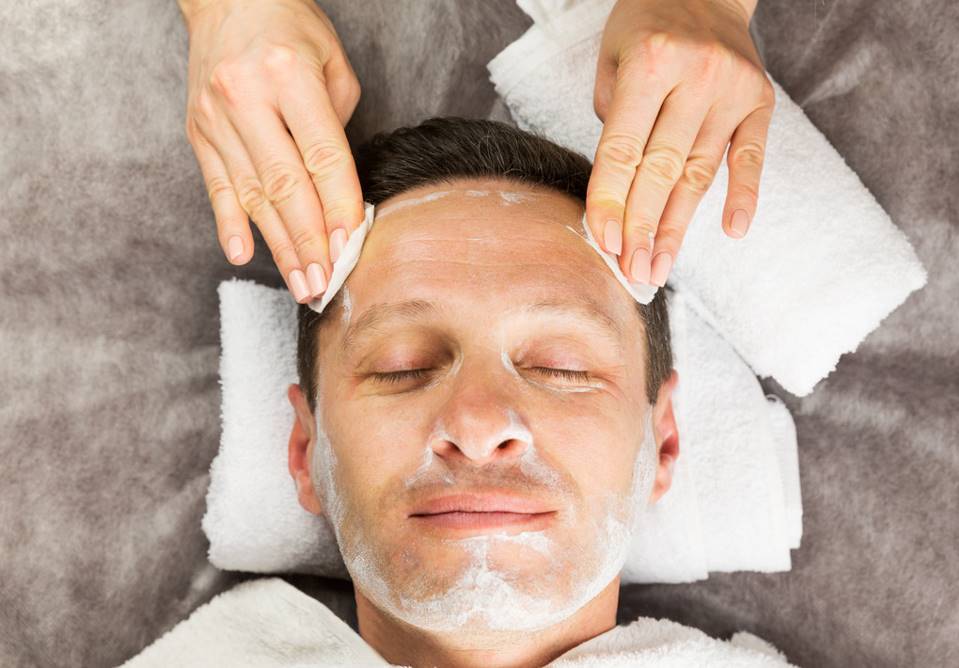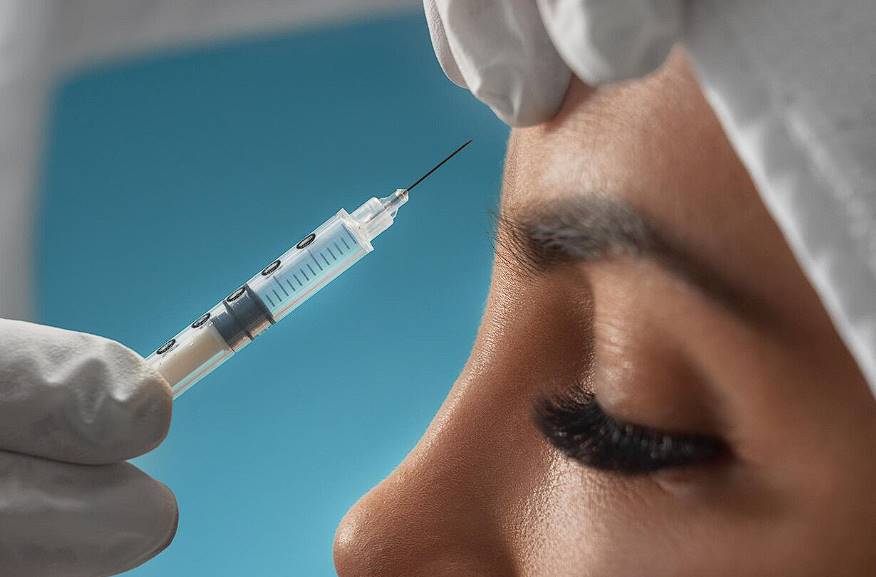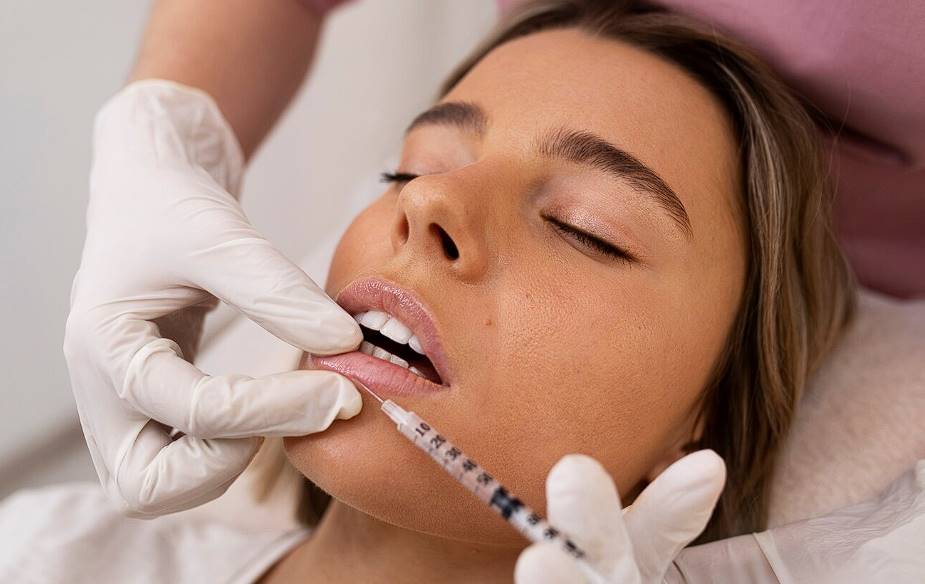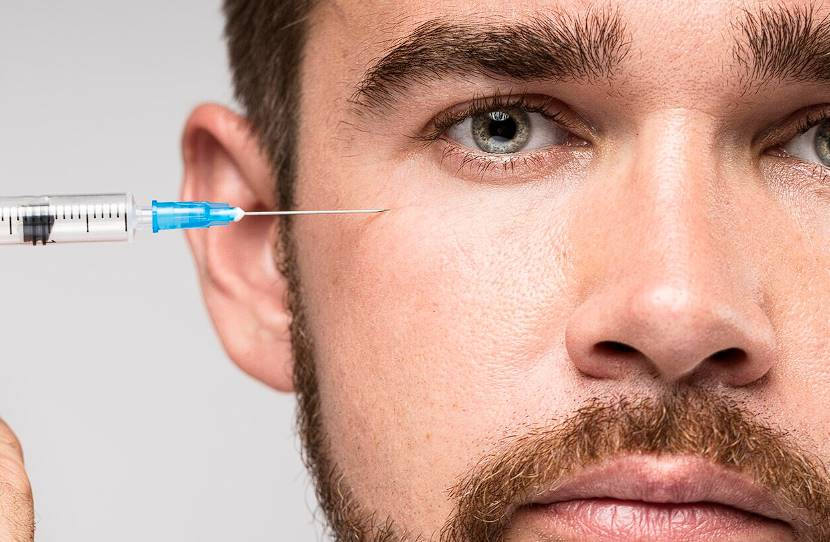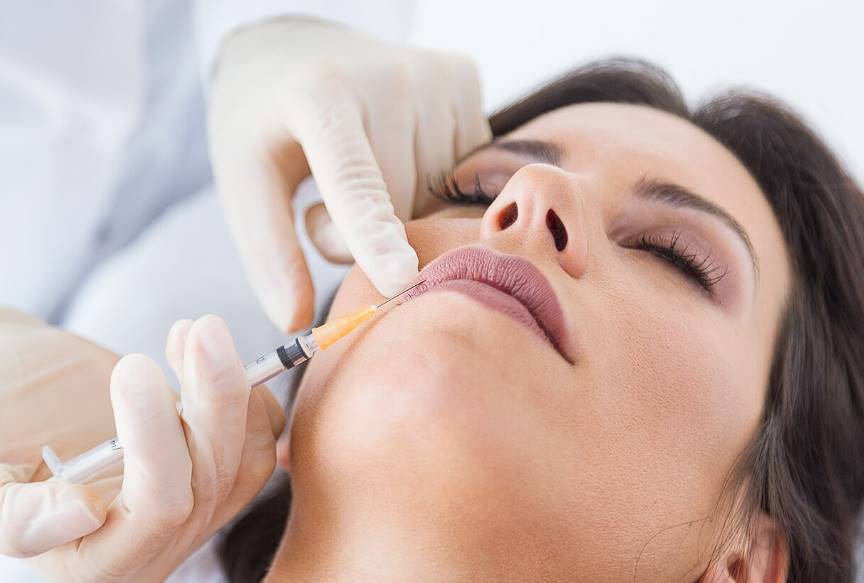When deciding between Botox and fillers for wrinkles and fine lines on the face, it's important to analyse the specific problem regions. Botox is commonly used for expression lines, whereas dermal fillers are more suited for lines that tend to sit at rest. The longevity of your results, budget, and other considerations may also come into play.
Botox and fillers are often reserved for separate parts of the face. Fillers and Botox are sometimes used in tandem to achieve a desired aesthetic effect. Due to their distinct properties, Botox and fillers can be used in tandem in a variety of medical procedures. Your dermatologist can advise you on the best course of therapy based on your specific goals.
Botox
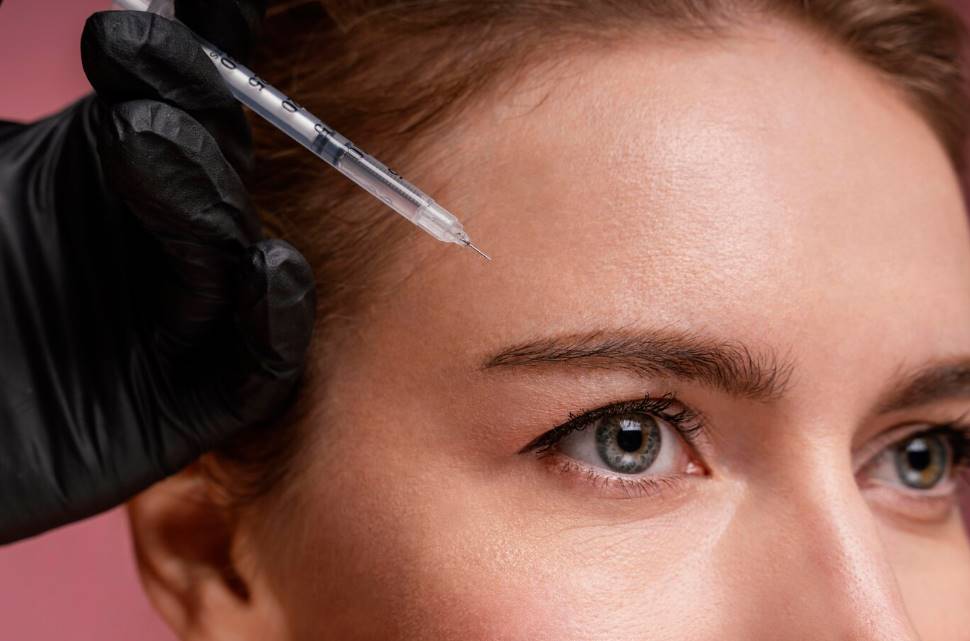
Muscle relaxation medication Botox is derived from bacteria. It has been available for more than two decades to treat neuromuscular conditions. Migraine headaches and other medical disorders are treated with it as well. Facial dynamic wrinkles are the most common target for Botox treatment. Wrinkles like this are a natural part of aging, and they show up most commonly around the eyes, mouth, and eyebrows.
As you get older, they stand out more and more. Muscles around these wrinkles can be relaxed with Botox injections. Dynamic wrinkles are less noticeable when the underlying muscles are not allowed to contract. Lines and wrinkles induced by collagen degeneration are not treatable with Botox. The wrinkles you desire reduced will be injected into the muscles that cause them. The injection technique only takes a few minutes, and you should start seeing benefits in about two weeks.
What Can Botox Fix?
Botox can temporarily reduce or eliminate wrinkles caused by dynamic muscle activity. Movement causes these wrinkles, often known as "expression lines." For the most part, Botox is used to treat dynamic wrinkles on the upper face, specifically the "11" between the brows, horizontal lines on the forehead, and crow's feet around the eyes. Expressions such as smiling, frowning, and squinting all contribute to developing these creases.
Wrinkles and fine lines brought on by a sunken or hollow face will not respond to Botox. Static wrinkles are what the name implies. Cheek, neck, and jowl lines are all common examples of static wrinkles. The effects of Botox are temporary. Repeated treatments are necessary to keep the skin smooth and wrinkle-free. The impact of Botox on relaxing muscles typically lasts between three and four months.
Dermal Fillers
Facial wrinkles can also be treated using dermal fillers. Fillers are commonly used to address smile lines but can also be utilised to enhance other facial features, including lips and cheeks. They are sometimes used to cure the hands or to hide scars. However, dermal fillers are not authorised for enlarging other body parts, including the breasts.
Similar to Botox, dermal fillers can be injected into the skin. Some are short-term and are mostly utilised for the soft tissues in the smile lines of the face. The expert has sanctioned the following choices:
- Gel solution containing calcium hydroxylapatite (Radiesse) that is worn off after 18 months.
- Collagen is a short-term substance that can be used for up to four months. Hyaluronic acid is a substance whose benefits wear off in about a year.
- The synthetic substance poly-L-lactic acid (Sculptra, Sculptra Aesthetic) has a lifespan of around two years.
- Beads made of polymethyl methacrylate, the only long-lasting dermal filler material
What Flaws Can Dermal Fillers Fix?
Dermal fillers come in various forms, each targeted at a specific aging issue. They might, depending on the filling,
- Thicken thinning lips.
- Accentuate or cover up the face's shallow parts.
- Lessen or eliminate the crease or shadow beneath the eyes brought on by the lower eyelid.
- Conceal or mitigate the appearance of sunken scars.
- Smooth out or conceal static creases, particularly those on the lower face. Lip and smile lines are examples of static wrinkles. The breakdown of collagen and elastin in the skin is usually blamed for these creases.
How Do I Make A Choice?
Efficacy
Can Botox Work?
The research reports that Botox injections are effective in most patients. You should start feeling the results within a week following the injection. Most adverse effects are mild and disappear quickly. If you have a medical condition that diminishes sensation, you may not feel the full effects of Botox. It would help if you discussed these potential dangers in advance with your doctor.
After the injections, you won't need downtime to return to your routine. The benefits of Botox typically endure for three to four months. After that, you'll need follow-up treatments to keep the effects at bay.
How Successful Are Facial Fillers?
Dermal fillers are also beneficial; their effects typically last far longer than Botox's. However, outcomes vary depending on the specific filler used. Similar to Botox, fillers require touch-up sessions once their benefits begin to fade.
Adverse Effects
Botox and dermal fillers, like any medical therapy, might cause some unwanted consequences. If you have any preexisting medical conditions, you and your doctor must explore additional factors. Think carefully about the costs and rewards listed below.
Botox Risks And Side Effects
The experts advise that only persons in generally good health should get Botox injections.
Some of the potential adverse effects are:
- bruising at the injection site
- falling eyelids, which may not go away for several weeks
- eyes irritated and reddened
- headaches
Some potential adverse reactions to Botox injections may be mitigated using eye drops. To avoid getting bruises, stop taking blood thinners a few days beforehand.
Botox shouldn't be used if you:
- either nursing or pregnant
- possess feeble facial muscles
- presently struggle with skin conditions like thick skin or severe scars
- have neuromuscular diseases such as multiple sclerosis
Dangers And Adverse Reactions To Dermal Fillers
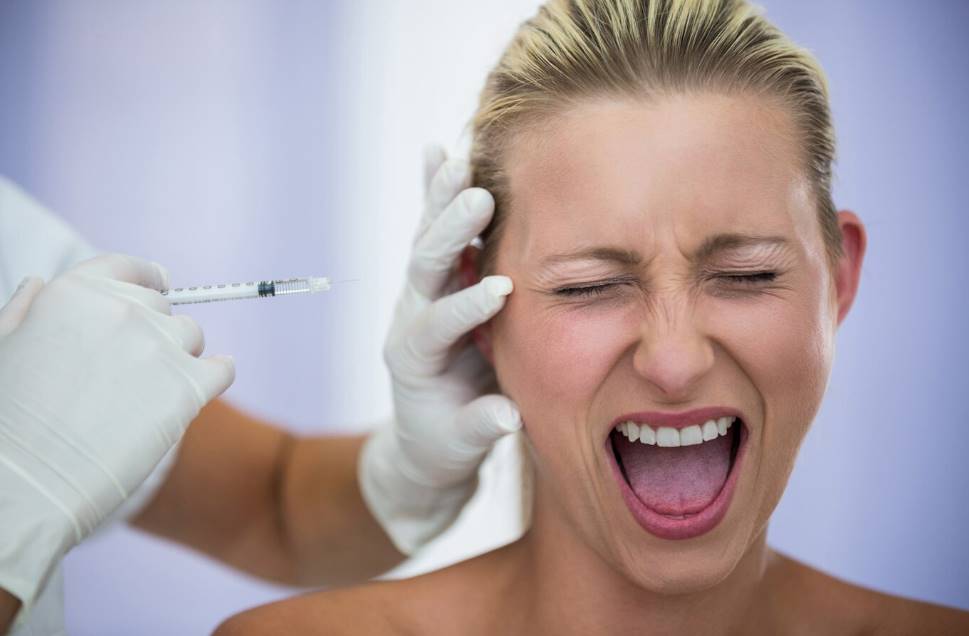
When compared to Botox, dermal fillers may cause more severe complications. Severe adverse effects are unusual. In most cases, moderate adverse effects fade away after two weeks. However, using unapproved needle-free injectable devices for dermal filler treatments has been linked to substantial side effects. Dermal fillers, injected under the skin, should only be administered by a medical practitioner using fillers approved. A few potential negative outcomes include:
- bruising
- infection
- allergic reaction
- numbness
- Itching
- sores
- scarring
- redness
Long-term facial edema may occur in extreme circumstances. Numbness and edema can be temporarily reduced by using an ice pack. If allergy testing is indicated before obtaining a dermal filler, it can help lessen the risk of these and other side effects. People who smoke shouldn't have dermal fillers. Similar to Botox injections, if you're healthy going in, you'll have better outcomes and fewer side effects.
Cost
Where you live, the size of the area you want filled, and the depth of your wrinkles all affect how much you can expect to pay for Botox or fillers. Some clinics will charge a set fee regardless of the number of units or syringes necessary to produce the desired effect. However, this is the exception rather than the rule. Cosmetic surgery, unlike most medical treatments, is rarely covered by health insurance and typically requires full out-of-pocket payment.
Choosing a treatment and a provider that works within your financial means is necessary. However, it would help if you exercise caution when working with service providers who lack the necessary education and experience. Focusing on the service's quality is essential. If you want attractive, natural-looking results without risk, see a dermatologist board-certified in cosmetic dermatology.
Recovery
There is no downtime associated with Botox or filler injections, in contrast to surgical procedures. Because of this, healing after receiving such treatment is expedited. After each operation, let's look at what you can and cannot do.
Botox Recovery And Aftercare Procedure
If you've had Botox, your doctor may tell you to avoid massaging the region for a while afterwards so that the neurotoxin doesn't travel to unintended spots on your body. You can go about your day as normal, including applying cosmetics immediately following the surgery. However, it would help if you refrained from doing the following in the first four hours after treatment.
- laying on your back
- heat treatment for the treated area
- exercise, sauna visits, prolonged sun exposure, and other potentially flushing activities
These practices help you if you are the type that gets bruises easily.
- After injecting, apply ice to the area every two to four hours for 15 minutes. The initial twenty-four hours of treatment are the most beneficial for icing.
- Prepare for and recover from Botox treatment by taking anti-bruising vitamins.
- For up to two days after injections, rest is recommended. The risk of bruising and increased blood flow to the skin occurs during exercise.
- Try sleeping with an extra pillow under your head to manage blood flow and prevent pressure at the injection site.
- Hair laser removal and injectables should be avoided in the days and weeks following face injuries.
Since blood thinners, alcohol, and certain herbal supplements can all lead to or hasten bruising, your doctor will likely urge you to avoid them for a period.
The Recovery And Aftercare Process For Fillers
After injecting filler, your dermatologist will likely wash your face and tell you not to touch it for at least 6 hours. After this time, you can remove makeup and bathe your face with water and a mild soap. Although it is recommended that you wait at least 6 hours before applying makeup again, companies like Oxygenetix exist. Some items to stay away from following your treatment are listed below.
- Exposing the injection site to high temperatures in a solarium or sauna
- Two days or more of intense activity
- Drinking alcohol for at least a day
- For the first two nights, apply pressure to the cured areas.
- Applying oil-based cosmetics, AHA, vitamin C, or retinol for a full day
- Microdermabrasion, facial waxing, glycolic peels, or energy-based therapies for a fortnight
Injections of fillers typically cause minimal to moderate discomfort. The tips below will make your road to recovery easier.
- Use over-the-counter analgesics such as paracetamol.
- In order to reduce swelling in the first 24 hours after injections, Ten minutes of cold compress application once an hour is suggested.
- Use Bruderm or Hirudoid to treat bruises and Bromelain to prevent them.
- Once the soreness and pain have subsided, massage the filler as your dermatologist has instructed.
- When you're sleeping, use an additional pillow to relieve pressure points.
Key Differences
In summary, here are the distinctions between fillers and Botox:
- Botox: This procedure freezes the muscles responsible for making expression lines and wrinkles. The upper part of the face, including the forehead and eye area, often has them.
- Dermal fillers: Hyaluronic acid and similar compounds are used to "fill in" or "plump" regions that have lost volume and smoothness.
- This comprises lines around the mouth, lip thinness, and hollowed cheeks. They can fill in scars, wrinkles, and other problems for a more even and natural finish.
- The effects of Botox can be expected to remain visible for up to four months. The outcomes of dermal fillers are not uniform.
It is possible to mix Botox and fillers in a single treatment due to their distinct properties and varied applications. Lines around the mouth and the nose can be filled in with a filler, while those between the eyes can be erased using Botox.
Which Treatment Is Best For You?
The correct answer is either/or, depending on your preferred method of attack. Careful deliberation is required before selecting dermal fillers or Botox. The two treatments are not equivalent, as they treat different conditions. Dynamic wrinkles and fine lines are best treated with Botox, whereas volume loss caused by collagen depletion can be remedied with dermal fillers. If you desire larger lips, fillers are also your best bet.
You can employ both treatments to restore your skin to its youthful smoothness. When used together, these procedures can have a multiplier effect on the face's overall appearance. Choosing the right technique requires careful consideration and the advice of a medical expert.
A Few Things to Think About Before Making a Choice
- What is your comfortable spending limit for the treatments?
- How uncomfortable are you able to be?
- Are you allergic to anything?
- For what duration do you hope the therapies' effects will last?
- Concerning downtime, are you?
- Do you currently take any medications or supplements that might interfere with the treatments?
Conclusion
When choosing between Botox and fillers for wrinkles and fine lines on the face, it's crucial to analyze the specific problem areas. Botox is commonly used for expression lines, while dermal fillers are more suited for lines that sit at rest. Both treatments are often reserved for separate parts of the face or can be used in tandem to achieve a desired aesthetic effect.
Botox is a muscle relaxation medication derived from bacteria that treats neuromuscular conditions and migraine headaches. It can temporarily reduce or eliminate wrinkles caused by dynamic muscle activity, known as "expression lines." However, it doesn't respond to wrinkles and fine lines caused by a sunken or hollow face.
Dermal fillers are also used to address facial wrinkles, such as smile lines, lips, cheeks, hands, or scars. They come in various forms, each targeting specific aging issues, and can help thicken thinning lips, accentuate or cover up shallow parts, eliminate creases beneath the eyes, conceal sunken scars, and smooth out static creases.
Choosing the right treatment depends on factors such as longevity, budget, and other considerations. A dermatologist can advise on the best course of therapy based on specific goals.
Botox injections are effective in most patients and typically last for three to four months. However, they may cause mild adverse effects, such as bruising, falling eyelids, irritated eyes, and headaches. These effects can be mitigated with eye drops and blood thinners. Botox should not be used by those with preexisting medical conditions or those with feeble facial muscles. Dermal fillers may cause more severe complications, such as bruising, infection, allergic reactions, numbness, itching, sores, scarring, and redness. Long-term facial edema may occur in extreme circumstances, and allergy testing can help reduce these risks. People who smoke should not have dermal fillers. Cost for Botox or fillers depends on factors like location, size, and wrinkle depth. Cosmetic surgery is rarely covered by health insurance and requires full out-of-pocket payment. It is essential to choose a treatment and provider that works within your financial means, but focus on the service's quality. A dermatologist board-certified in cosmetic dermatology can provide natural-looking results without risk.
Botox and fillers are two treatments used to treat expression lines and wrinkles. Botox freezes muscles responsible for these lines, while fillers fill in lost volume and smoothness. The effects of Botox can last up to four months, while dermal fillers can be used to erase lines around the mouth and the nose.
Botox is best for dynamic wrinkles and fine lines, while dermal fillers can be used to remediate volume loss caused by collagen depletion. Fillers are also suitable for larger lips. Both treatments can restore skin to its youthful smoothness when used together, but choosing the right technique requires careful consideration and the advice of a medical expert.
To make a choice, consider factors such as your comfortable spending limit, discomfort, allergies, downtime, and medications or supplements that might interfere with the treatments. After a few hours of rest, apply ice to the affected area every two to four hours for 15 minutes, take anti-bruising vitamins, and avoid activities that may cause bruising.
In summary, Botox and fillers are two treatments that can be combined to improve the appearance of the face. It is essential to choose the treatment that best suits your needs and preferences.
Content Summary
- Botox and fillers are popular treatments for wrinkles and fine lines.
- The choice between them depends on the specific facial areas to be treated.
- Botox is often chosen for treating expression lines.
- Dermal fillers work best for lines present even when the face is at rest.
- Budget and longevity of results are essential considerations.
- Botox and fillers can be used together for some medical procedures.
- Dermatologists can advise on the best treatment based on individual goals.
- Botox is a muscle relaxation medication derived from bacteria.
- Botox has been used for over two decades for neuromuscular conditions.
- It can also treat migraine headaches.
- Botox primarily targets facial dynamic wrinkles around eyes, mouth, and eyebrows.
- Botox works by relaxing the muscles around wrinkles.
- Dynamic wrinkles are caused by muscle activity and are called expression lines.
- Botox is ineffective against wrinkles caused by collagen degeneration.
- The effects of Botox usually manifest in about two weeks.
- Botox mainly treats upper face dynamic wrinkles.
- Common Botox targets include the "11" between brows, forehead lines, and crow's feet.
- Smiling, frowning, and squinting contribute to these expression lines.
- Static wrinkles, such as those on cheeks and neck, aren't treatable with Botox.
- Botox effects last between three to four months.
- Dermal fillers also treat facial wrinkles.
- They can address smile lines and enhance lips and cheeks.
- Some fillers can be used to treat hands or hide scars.
- Fillers should not be used for enlarging body parts like breasts.
- Different fillers have varied lifespans ranging from months to years.
- Dermal fillers can enhance thinning lips and cover face's shallow parts.
- They can reduce shadows beneath eyes and conceal sunken scars.
- Fillers are suitable for treating static wrinkles caused by collagen breakdown.
- Research indicates Botox injections are effective for most patients.
- Results of Botox can be felt within a week.
- Botox benefits last for about three to four months.
- Dermal fillers effects usually last longer than Botox.
- Touch-up sessions are needed for both treatments.
- Botox and fillers might have adverse effects.
- Botox risks include bruising, falling eyelids, irritated eyes, and headaches.
- Dermal fillers may lead to bruising, infection, allergic reactions, and numbness.
- The cost of treatments depends on location, area size, and wrinkle depth.
- Cosmetic procedures are generally not covered by health insurance.
- It's crucial to consult a board-certified dermatologist for the treatments.
- Neither Botox nor fillers require downtime.
- After Botox, patients should avoid massaging the treated area.
- Certain activities like laying on one's back and exercising should be avoided post-Botox.
- Applying ice post-Botox can be beneficial to prevent bruising.
- It's recommended to rest for up to two days after Botox injections.
- Blood thinners, alcohol, and some herbal supplements should be avoided post-treatment.
- After filler injections, one shouldn't touch the face for at least 6 hours.
- A qualified medical practitioner should administer dermal fillers.
- Severe complications from dermal fillers are rare but possible.
- Both Botox and fillers are temporary solutions requiring regular touch-ups.
- The choice between Botox and fillers should be made after thorough consultation.
Frequently Asked Questions
Many consider dermal fillers to be slightly riskier than Botox because of the added potential side effects. Although rare, there are potentially severe side effects, such as stroke, blindness, skin discolouration, and bumps at the treatment sites.
Certain types, like Radiesse, can also help create collagen in the face, neck and body. Remember, the filler is considered much more dangerous than Botulinum Toxin injections because the gel-like substance is more like an implant (usually lasting around a year) and can also occlude vessels.
The lines can be smoothed with fillers, but in most cases, BOTOX is a superior choice for forehead lines. When fillers are used to smooth these lines, they are less effective and dissipate much more quickly as the body sheds them due to the constant muscle motions.
You would expect your skin to return to its original state, and the wrinkles would slowly reappear. In a nutshell, it would be no better or worse than when you first had Botox.
Hyaluronic acid-based products are considered one of the safest in dermal fillers, particularly those made from synthesized HA, which is made in bacteria instead of human or animal tissue.
